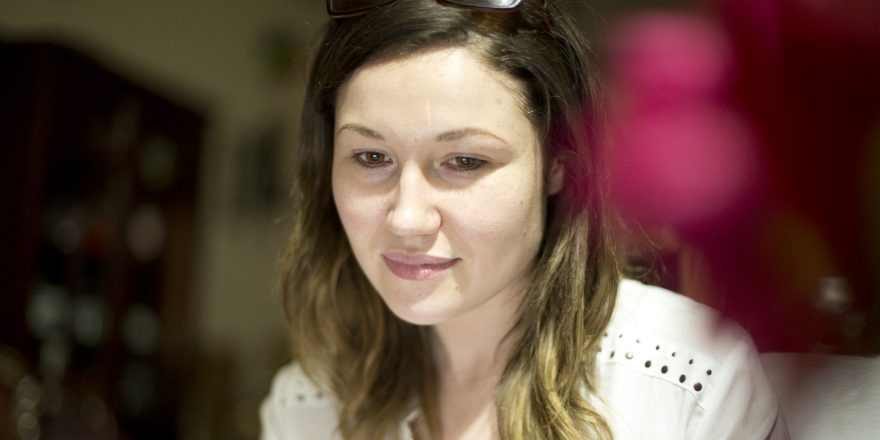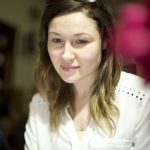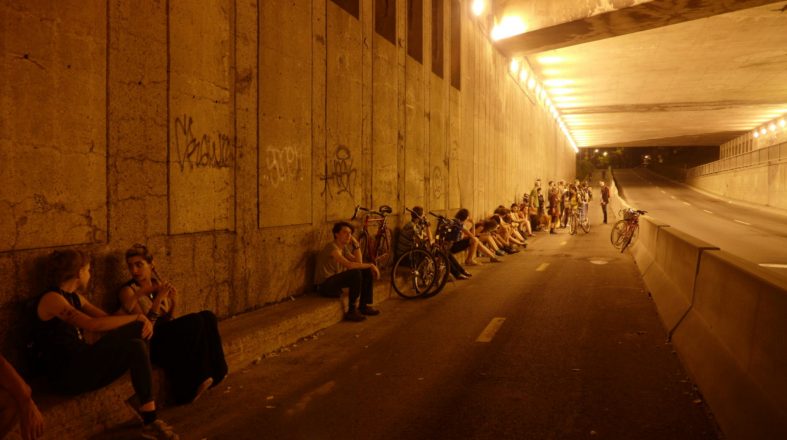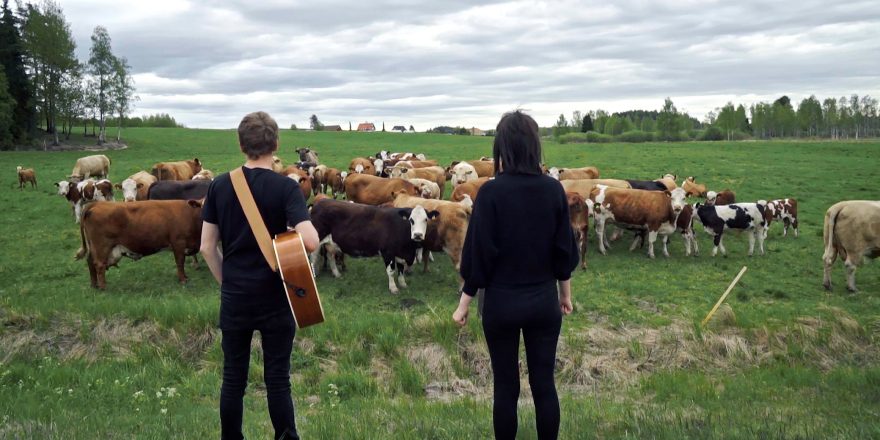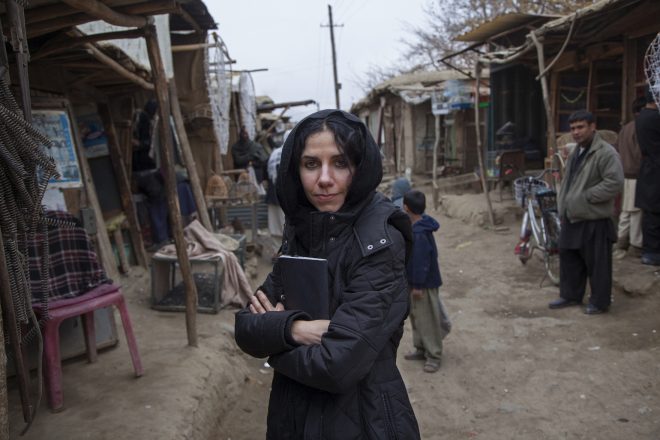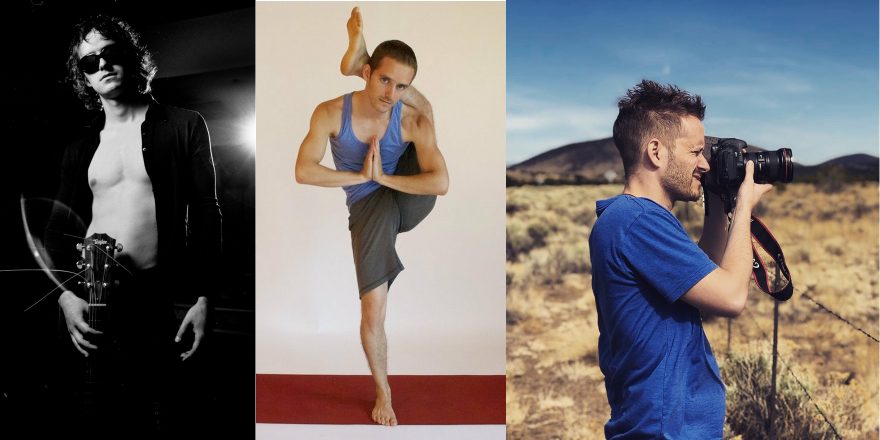On a brilliant October day in 2017, I found myself on a rooftop in the East Village, a four-story tenement on Avenue A, gazing up into a cloudless blue sky.
The street below was teeming with life – New Yorkers savoring the late afternoon sun. But the hum of voices and rush-hour traffic reached us as a faint murmur. Here, on the rooftop, there was an overwhelming sense of calm. Of peace. Which was apt, since this particular building has the word “PEACE” stenciled, in negative space, on the ground level of its white facade.
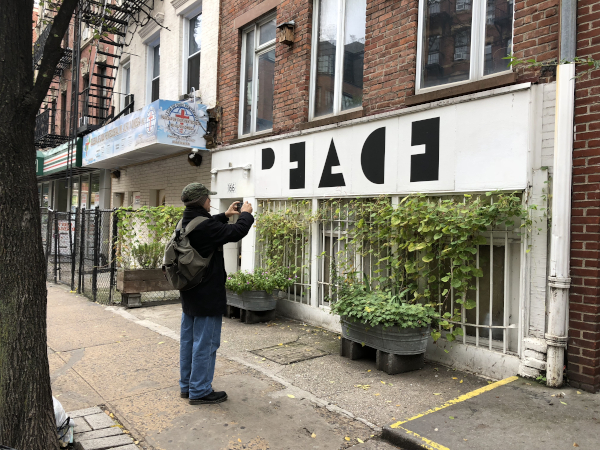
If you live in the East Village, or come here often, you’ll likely recognize the house I’m talking about. You might even know the unusual man it belongs to – and you might even know about the hidden world on its rooftop.
If you ever look up on a clear afternoon, you might see Anton van Dalen up there, standing on the rung of a bright yellow ladder, waving a stick back and forth through the air. And you might see his flock of snow-white pigeons – “doves,” you might think, so pristine they appear – circling the sky, waiting for their keeper to call them back home.
Along with my friends Dennis Mohr and Morgan Schmidt-Feng, I’d been invited into this rooftop oasis to make a documentary about Anton van Dalen: an unconventional Dutch-American artist, and the resident pigeon-keeper of Avenue A.
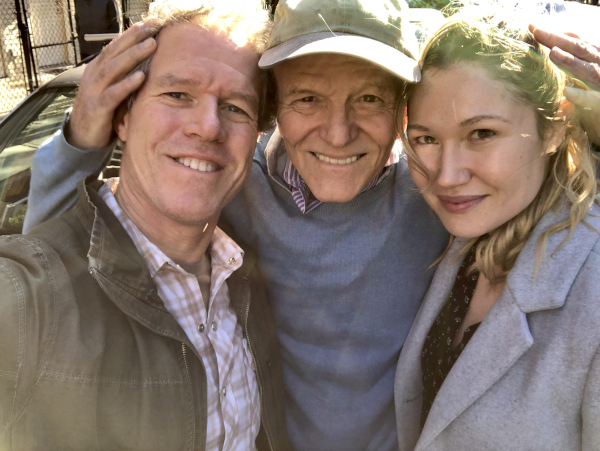
We’d all taken time off from our usual gigs – Dennis and I from a major broadcaster in Toronto, and Morgan, a cinematographer, from the full-service production company he owns and operates in the Bay Area.
Needless to say, this was a passion project. We’d all felt the twinge when we first met Anton through the previous short film we worked on together. Each one of us had been drawn to the pigeon man and his story, felt the nagging pull in the pit of our guts, telling us that this was something really special; this was a story we had to pursue.
Something worth our time, money and cognitive energy – a decision not made lightly, given the considerable investment required.
For me, it was an especially tough call. I was already in production on a feature documentary, one with many funders and stakeholders involved. And I was struggling to manage the demands of the workload, along with my full-time broadcasting job.
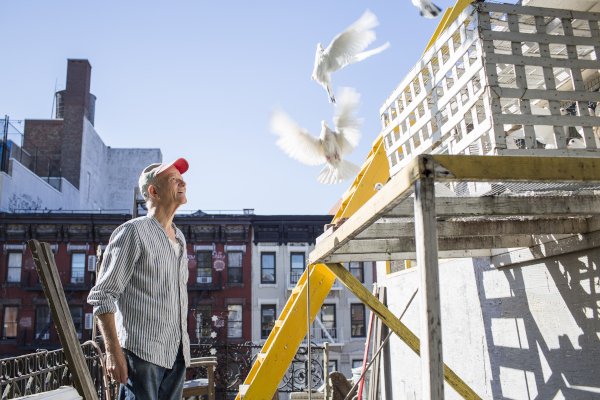
If I’m being honest, though, it wasn’t really the work that was suffering. I’d grown accustomed to 4 a.m. nights and 70-hour weeks. To pushing through the constant veil of fatigue, to feeling (and looking) like shit most of the time.
I was committed to my teammates, my subjects, my stakeholders. I wasn’t about to let them down.
But other aspects of my life weren’t faring so well.
My boyfriend was growing increasingly frustrated. “You’re unreachable,” he’d say, as I sat glued to the screen.
“Hi Katy, remember me?” A not infrequent text from my mom, whenever I missed another Sunday check-in.
My friends had accepted my absenteeism – the unreturned phone calls, declined invitations, ignored texts. “Katy’s so busy,” they’d graciously say – but how long does it take to make a documentary, anyway?
As for diet, exercise, mindfulness, career development?
Please. It was all I could do to drag myself out of bed, pull on something clean from my tired rotation, throw my hair in a top knot and hop the streetcar to work, grabbing Starbucks for breakfast (again) on the way.
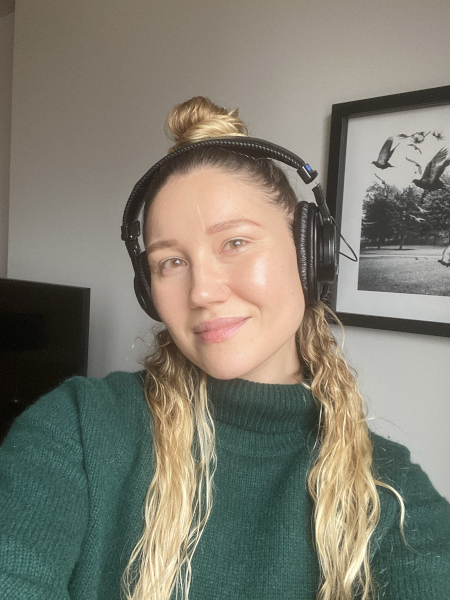
I was functioning at max capacity. To pursue another project would be truly insane.
But the pull of the story was just so strong. I was compelled by this man and his brood of pigeons. The authenticity of his character, the astuteness of his work, his genuine enthusiasm for life and humanity. I knew that his story deserved to be told, and that we were the best ones – the only ones – to do it.
And since Anton was nearly 80, the time to do it was now.
My brain filled in the rest of the excuses. It’s just a short film, all you need is one shoot. You can use points, it won’t cost that much. It’ll be easy. It’ll be fun.
I promised my boyfriend it would be the last one.
Flash forward to 2021. Three years, six shoots, and one pandemic later.
Morgan, Dennis and I, along with our editor Will Nold, are navigating the release of Anton: Circling Home in the volatile virtual film festival landscape.
Originally intended to be a short, the project evolved into an hour-long feature for TV when a Dutch broadcaster came knocking with a commission in hand.
The truth is, we’d all realized there was much more to this story than we could possibly explore in a short film.
Because Anton is a rare artist who has managed to have it all: a home, a loving family, a long life and a prolific career. Fulfillment in his work and in his relationships – a feat all too elusive for many driven to create.
In a lot of ways, it’s those relationships – the human connections he seeks – that are the engine behind his remarkable productivity.
Defying the archetype of the isolated artist, his identity revolves around being part of his community, which, since 1972, has been his East Village home. For almost 50 years, he’s engaged with the neighborhood and its people, bringing subjectivity to those who are largely ignored. And in doing so, he’s become part of the story of the East Village, embedded in the fabric of its evolution and character.
It’s not difficult to understand his emphasis on community, as Anton spent most of his childhood alone. Raised in Holland under Nazi occupation, in a strict Calvinist society with a heavy-handed father, the troubled and idiosyncratic boy sought solace in the natural world. It’s what brought him, at the age of 12, to his first pigeon coop. And why keeping pigeons remains a preoccupation to this day.

But perhaps Anton’s greatest project is his most personal: His home on Avenue A, where he brought up his own family, after immigration tore the van Dalens apart.
Where he finally found peace and a sense of belonging.
Where the wounds of his journey could begin to heal.
This was clearly so much more than a quirky artist profile. It was a universal meditation on family, forgiveness and regret.
So we accepted the small license fee and the high-stakes pressure that came with it.
And settled in for the long-haul of a broadcast production.
This meant many more late nights and bloodshot-eyed mornings.
More declined invitations and “maybe next times.”
A neglected boyfriend on the verge of leaving.
More passive-aggressive texts from my mom.
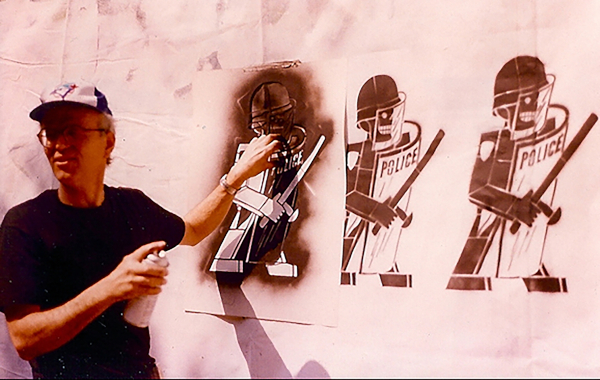
As we launch Anton into the wider world, buoyed by what was ultimately a beautiful collaboration, I nevertheless find myself at a crossroads – facing a difficult decision about my future in filmmaking.
It’s clear that my dual careers are no longer sustainable. I will have to make a choice between this passion and my corporate job.
But more than this, I have to ask myself what success really looks like – how it’s defined, who is included, and for how long?
All this time, I’ve been chasing the stories of others, observing and crafting their narratives for the screen.
But what about my own story? The narrative I star in? How will it end if I don’t rewrite the scene? When the friends stop calling and the parents get older? When the boyfriend finally (and justifiably) leaves?
If Anton has taught me anything over the years, it’s that art, above all, is about human connection, about opening yourself up to the beauty of life. About friendship and family and the world outside your doorstep – the hyper-local, the immediate, the circle of home.
As we begin to emerge from the grip of pandemic, one that forced us all into our own backyards, I am doing so with the resolve to slow down and pay attention, to nurture and rekindle those connections I’ve lost.
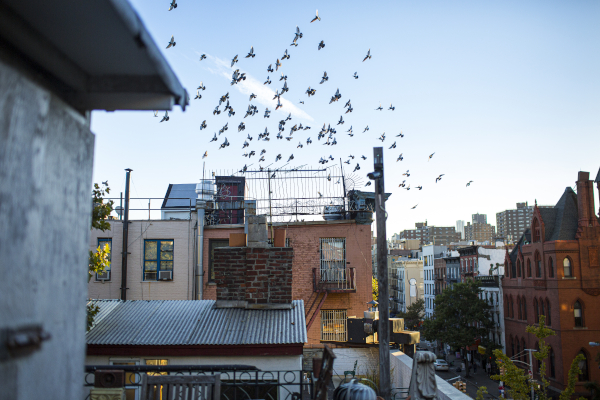
Anton isn’t as famous as some of his contemporaries. He didn’t become a household name. But for him, success was about cultivating a household, and in this he has achieved his wildest dreams.
I’m still circling around my own idea of fulfillment. Whether marriage or family are in the cards.
But I’ll start with calling my mom, my friends and my boyfriend, and hopefully I’ll end up where I belong.


